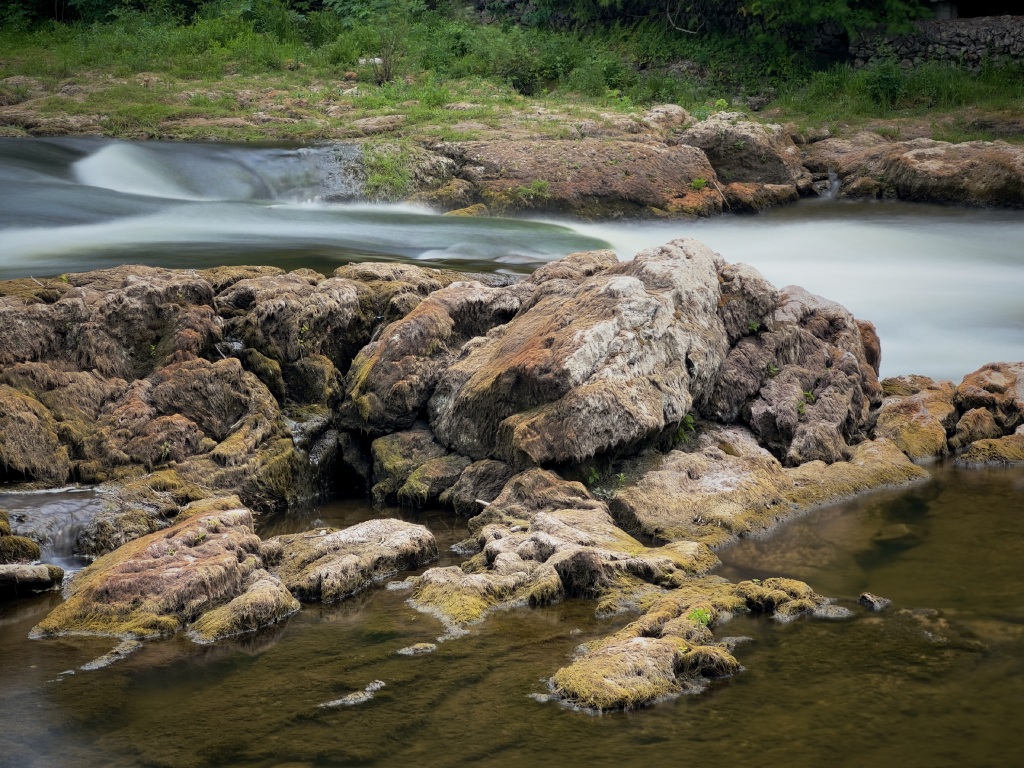
If you know me, follow me on social media, or you’ve listened to my podcast, you’d know I’ve been using ReeHeld a lot since it came out. In fact, I was an early beta tester for it, and it has quickly become my favourite app to shoot with when doing long exposures where water is involved. If you aren’t familiar with ReeHeld, it’s a simple app on the surface but quite complex in the way it works, and what sets it apart from other long exposure apps is that it has the ability to produce long exposures up to 30 seconds, handheld. That’s right, no tripod needed.
As I wrote in a recent blog post, the iPhone achieves long exposures by stacking multiple frames together and averaging the exposures, and most long exposure apps use the image stabilization available in the hardware on the iPhone’s camera system to keep the frames aligned, but ReeHeld doesn’t. It uses artificial intelligence to align the frames and, I think it works better this way. This makes shooting with ReeHeld an art form in and of itself because there are two key factors that will guarantee your success with it.
The first key to success with ReeHeld is, obviously, holding the camera as still as possible. The team at Reeflex, who brought us Reeflex Pro Camera, ReeXpose, and now ReeHeld, have incorporated a Smart Stability Indicator, which is a set of crosshairs in the centre of the screen that offset from each other when camera movement is detected. Keeping the indicators aligned ensures that you don’t twist the camera off its axis, even slightly, and will help you get a sharper image over the length of your exposure.
The other key factor is something that you might not realize you need, and that is something static, or a non-moving object, within the frame. If you tried to make an image of the ebb and flow of waves on a beach with no other significant, inanimate subject in the scene, you’d end up with a garbled mess of blur. The AI component of the app needs something to “latch onto” in order to properly align each of the frames created during the shooting process. Once it does, the results can be mind blowing.
I told you all of that to tell you this: a very sharp image is indeed attainable when shooting handheld for a number of seconds. The image in this post was only 7 seconds, and I say “only” because I’ve created plenty of images that were taken over the full 30 seconds that ReeHeld is capable of doing. I’ve had plenty of practice with ReeHeld and, with the help of the Smart Stability Indicator, I’d say I have a very high success rate in the images I shoot. But this post isn’t just about ReeHeld. There’s another aspect to this image that makes it worthy of an “About The Shot” portfolio.
I have an iPhone 14 Pro Max, and the Main Camera has a 48MP sensor. I wrote about that too. However, my favourite camera to use on my iPhone is the Telephoto because I really like the 77mm focal length, but it only has a 12MP sensor. When I reviewed this image on my phone hours after I shot it, I realized that there was a lot of detail in the grass covered rocks in the foreground and I was pleasantly surprised at how well ReeHeld captured it. It was a 7 second shot so the likelihood of success was pretty good. I often wish the Ultra Wide and Telephoto cameras in the iPhone were also 48MP, but, not all is lost.
Photomator is an editing app by the folks at Pixelmator and it has a very good image upscaling feature called Super Resolution. With a tap, you can double the dimensions of an image file, and that’s exactly what I did with this one. Doubling the dimensions takes the 12MP file from 4032×3024 to 8064×6048, the same dimensions as the 48MP sensor. When I open the upscaled image on my iMac, the details really pop! The water flowing in the background would normally be the point of interest in a photo like this, but the real star of the show, at least for me, is ReeHeld’s ability to produce such sharp image quality via its image alignment capabilities. Sure, the upscaling helps showcase it and Photomator is solely responsible for that part of it, but it needed a good image to start with.
I never thought I’d be this excited over an image of dead, mossy grass on a bunch of rocks. The image looks best on a computer screen and when you click on it you can see it full screen.
